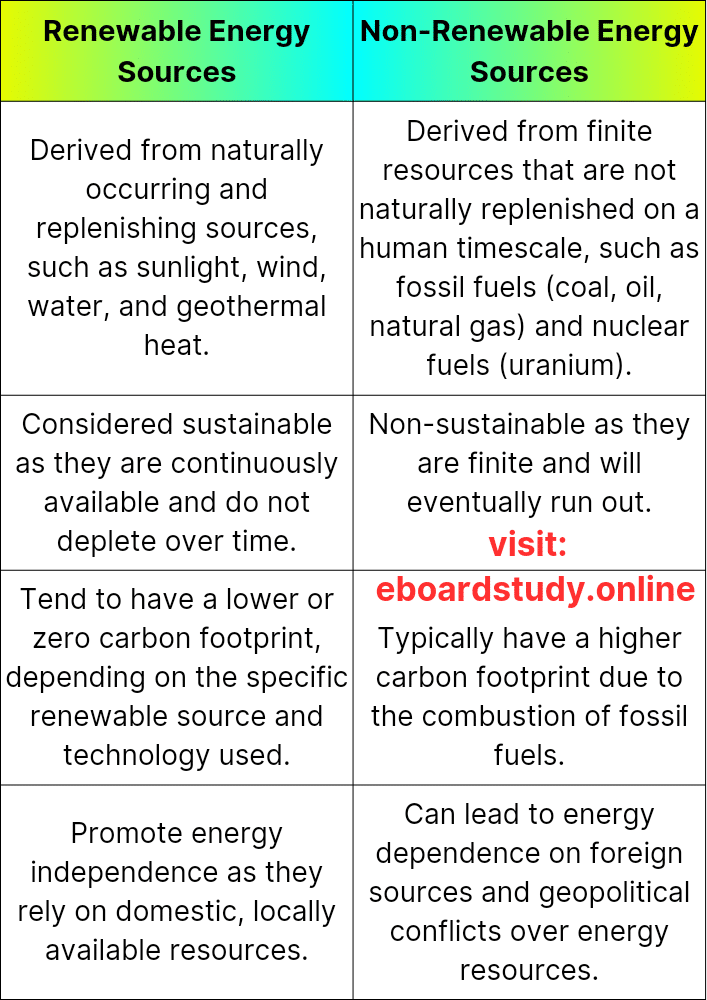Introduction
There are two primary categories in the world of energy: non-renewable and renewable energy sources Because they play a significant role in shaping our energy landscape, it is essential to comprehend the fundamental differences between renewable energy and non-renewable Energy Sources these two types. This article aims to provide a comprehensive overview of both renewable and non-renewable energy sources and shed light on the differences.
Difference between Renewable Energy and Non-Renewable Energy Sources [in Table]
The following table offers what is difference between renewable energy and non-renewable energy:

Exploring Renewable Energy Sources
Renewable energy sources have gained immense popularity due to their clean nature and sustainable attributes. Let’s delve deeper into some key types of renewable energy sources:
Solar Power: Solar strength harnesses the strength emitted via the sun and converts it into electricity the use of photovoltaic (PV) cells or sun thermal creditors. It is a rapidly growing sector, with solar panels becoming increasingly affordable and efficient.
Wind Energy: Wind strength harnesses the power of wind to generate energy thru wind mills. It is a clean and abundant source of energy, particularly viable in coastal areas or regions with consistent wind patterns.
Hydroelectric Power: Hydroelectric power relies on the force of flowing or falling water to generate electricity. Dams are built to control the go with the flow of water, converting its kinetic energy into electrical power.
Geothermal Energy: Geothermal electricity faucets into the herbal heat stored inside the Earth’s crust. It involves extracting steam or hot water from geothermal reservoirs to power turbines and generate electricity.
Biomass: Biomass refers to natural count, together with vegetation, crop residues, or wood, which may be used as a renewable power source. It can be converted into heat, electricity, or biofuels through processes like combustion or fermentation.
Learning About Non-Renewable Energy Sources
Non-renewable strength assets are derived from finite resources that took millions of years to shape. Let’s discover a few fantastic non-renewable strength sources:
Fossil Fuels:
Coal, oil, and natural gas are examples of fossil fuels made from old natural materials. They are broadly used for strength era, transportation, and industrial functions. However, their combustion releases greenhouse gases and contributes to climate trade.
Nuclear Power:
Nuclear electricity involves the fission of uranium or plutonium atoms, freeing a first-rate amount of power. It is a distinctly focused source of electricity but raises worries regarding radioactive waste disposal and potential injuries.
Conclusion
In conclusion, the distinction among renewable and non-renewable strength sources lies in their availability, environmental impact, sustainability, and technological development. While renewable power assets offer clean and sustainable options, non-renewable strength assets have historically powered our society. As we preserve to prioritize environmental maintenance, transitioning closer to a more reliance on renewable strength becomes vital for a sustainable destiny. By expertise the variations and exploring innovative solutions, we are able to pave the way for a greener and more strength-green world.

